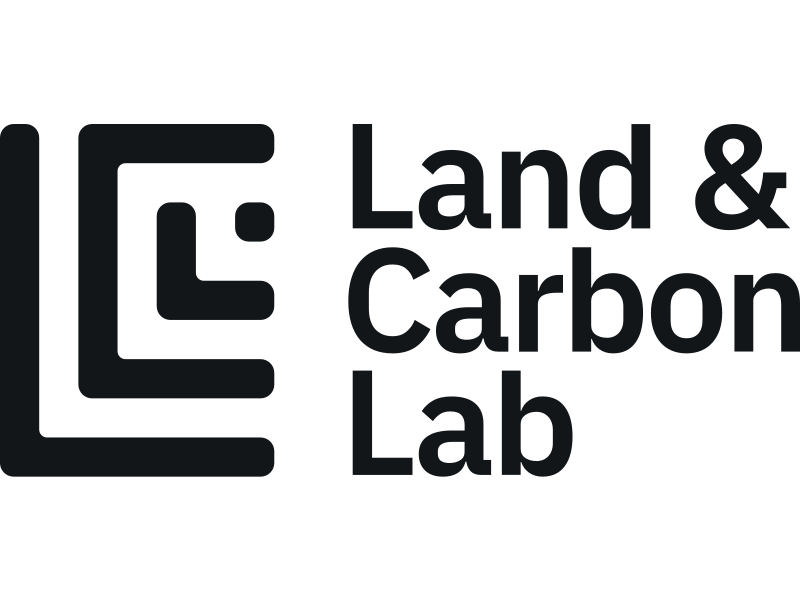
- בעלי הקטלוג
- Global Pasture Watch
- זמינות קבוצת הנתונים
- 2000-01-01T00:00:00Z–2023-01-01T00:00:00Z
- ספק קבוצת הנתונים
- Land and Carbon Lab Global Pasture Watch
- יצירת קשר
- Land & Carbon Lab
- קצב
- שנה אחת
- תגים
תיאור
מערך הנתונים הזה מספק מפות גלובליות של הסתברות שטח עשבוני טבעי או חצי-טבעי מדי שנה, משנת 2000 עד 2022, ברזולוציה מרחבית של 30 מ'. הנתונים האלה נוצרו על ידי יוזמת Land & Carbon Lab Global Pasture Watch. הם כוללים את כל סוגי כיסוי הקרקע שמכילים לפחות 30% צמחייה נמוכה יבשה או רטובה, שבה הדשא והעשבים הם הרוב (פחות מ-3 מטרים), וגם:
- מקסימום 50% כיסוי צל עצים (מעל 5 מטרים),
- עד 70% של צמחייה מעוצה אחרת (שיחים ושטחי שיחים פתוחים), ו
- מקסימום 50% כיסוי של שטחי גידול פעילים בנופי פסיפס של שטחי גידול וצמחייה אחרת.
שטחי העשב מחולקים לשתי קטגוריות: - שטחי עשב מעובדים: אזורים שבהם נשתלו וטופלו באופן מכוון עשבים וצמחי מספוא אחרים, וגם אזורים של צמחייה מקומית מסוג עשב שבהם ניכר בבירור ניהול פעיל ואינטנסיבי לשימושים ספציפיים שמיועדים לבני אדם, כמו רעייה מבוקרת של בעלי חיים. – Natural/Semi-natural grassland (שטחי עשב טבעיים או חצי טבעיים): שטחי עשב מקומיים או צמחייה נמוכה יחסית שלא הופרעו, כמו ערבות וטונדרה, וגם אזורים שהייתה בהם בעבר פעילות אנושית בדרגות שונות, שעשויים להכיל תערובת של מינים מקומיים ומינים שהובאו לאזור בגלל שימוש היסטורי בקרקע ותהליכים טבעיים. באופן כללי, הם מציגים דפוסים טבעיים של צמחייה מגוונת וקשרים הידרולוגיים מסודרים בבירור לאורך הנוף.
המתודולוגיה שהוטמעה התבססה על תמונות GLAD Landsat ARD-2 (שעברו עיבוד לצבירות דו-חודשיות ללא עננים, ראו Consoli et al, 2024 ), בתוספת משתני עזר אקלימיים, גיאומורפולוגיים ומשתני קרבה, למידת מכונה מרחבית-זמנית (Random Forest לכל סיווג) ויותר מ-2.3 מיליון דגימות ייחוס (שפורשו באופן ויזואלי בתמונות ברזולוציה גבוהה מאוד). השתמשנו בספי הסתברות מותאמים אישית (על סמך אימות צולב מרחבי של חמישה חלקים וערכי דיוק וזיכרון מאוזנים) כדי ליצור מפות של סיווגים דומיננטיים, 0.32 ו-0.42 לספי הסתברות של שטחים מעובדים ושל שטחי עשב טבעיים או חצי טבעיים, בהתאמה.
מגבלות: יש הערכת חסר של שטחי העשב בדרום-מזרח אפריקה (זימבבואה ומוזמביק) ובמזרח אוסטרליה (שטחי שיחים ויערות באזור האקולוגי של מולגה). שטחי גידול מסווגים באופן שגוי כשטחי עשב בחלקים של צפון אפריקה, חצי האי ערב, מערב אוסטרליה, ניו זילנד, מרכז בוליביה ומדינת מאטו גרוסו (ברזיל). בגלל הכשל ב-SLC של Landsat 7, אפשר לראות פסים רגילים של הסתברויות של שטחי עשב ברמת החלקה, במיוחד בשנת 2012. השימוש בשכבות ברזולוציה גסה יותר (מפות נגישות ומוצרי MODIS) הוביל לשגיאות מקרוסקופיות מעוקלות (בגלל אסטרטגיית ההקטנה שמבוססת על cubicspline) באורוגוואי, בדרום-מערב ארגנטינה, בדרום אנגולה ובאזור סאהל באפריקה. המשתמשים צריכים להיות מודעים למגבלות ולבעיות הידועות, ולשקול אותן בקפידה כדי להבטיח שימוש הולם במפות בשלב הראשוני הזה של החיזוי. צוות GPW פועל באופן פעיל לאיסוף משוב שיטתי באמצעות פלטפורמת Geo-Wiki, כדי לאמת את הגרסה הנוכחית ולשפר את הגרסאות העתידיות של מערך הנתונים.
מידע נוסף זמין במאמר Parente et. al, 2024, Zenodo ובאתר Global Pasture Watch GitHub
תחום תדרים
רצועות
| שם | מינימום | מקסימום | גודל הפיקסל | תיאור |
|---|---|---|---|---|
probability |
0 | 100 | 30 מטרים | ערך הסתברות של שטחי עשב טבעיים או חצי טבעיים, שנגזר באמצעות Random Forest. |
מאפייני תמונה
מאפייני תמונה
| שם | סוג | תיאור |
|---|---|---|
| גרסה | INT | גרסת המוצר |
תנאים והגבלות
תנאים והגבלות
ציטוטים ביבליוגרפיים
Parente, L., Sloat, L., Mesquita, V., et al. (2024) Global Pasture Watch - Annual grassland class and extent maps at 30-m spatial resolution (2000—2022) (Version v1) [Data set]. Zenodo doi:https://doi.org/10.5281/zenodo.13890401
Parente, L., Sloat, L., Mesquita, V., et al. (2024). מפות שנתיות של שטחי עשב בעולם ברזולוציה של 30 מ' (2000–2022) על סמך למידת מכונה מרחבית-זמנית, נתונים מדעיים. doi: http://doi.org/10.1038/s41597-024-04139-6
מספרי DOI
סיור עם פלטפורמת Earth Engine
Code Editor (JavaScript)
Map.setCenter(63.72366666, 38.30182604, 4); var nat_semi_grassland = ee.ImageCollection( "projects/global-pasture-watch/assets/ggc-30m/v1/nat-semi-grassland_p" ) var min_prob = 42 // Probability threshold var visParams = {min: 15, max: 85, palette: 'f7f1e5,af8260,803d3b,322c2b'} var nat_semi_grassland_2022 = nat_semi_grassland.filterDate('2022-01-01', '2023-01-01').first(); Map.addLayer( nat_semi_grassland_2022.mask(nat_semi_grassland_2022.gte(min_prob)), visParams, 'Natural/Semi-natural grassland prob. (2022)' ); var nat_semi_grassland_2000 = nat_semi_grassland.filterDate('2000-01-01', '2001-01-01').first(); Map.addLayer( nat_semi_grassland_2000.mask(nat_semi_grassland_2000.gte(min_prob)), visParams, 'Natural/Semi-natural grassland prob. (2000)' );

